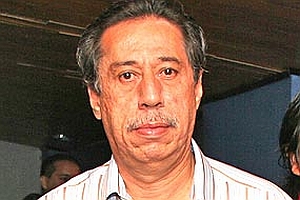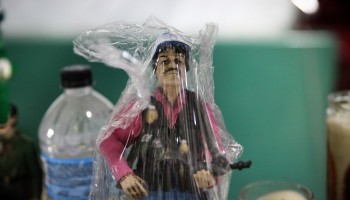Each journalist was engaged in investigative work on organized crime and corrupt law enforcement, and their abductions appear to have been perpetrated by criminal groups possibly working in concert with corrupt police. So far, all seven cases remain unsolved, suffering from investigations that faltered in their early stages and have still failed to yield up a single lead. The CPJ met with Mexican President Felipe Calderon in June to enlist his support for new legislation making crimes against journalists in Mexico a federal offense. Congress is expected to debate the issue this autumn.  Rodolfo Rinco Taracena"The main source of danger for journalists is organized crime—and the second is the government," said Rep. Gerardo Priego Tapia, who heads of the congressional committee on violence against the press and a supporter of the measures.
Rodolfo Rinco Taracena"The main source of danger for journalists is organized crime—and the second is the government," said Rep. Gerardo Priego Tapia, who heads of the congressional committee on violence against the press and a supporter of the measures.
"The worst scenario for journalists is when organized crime and the government become partners. And in many parts of this country, they are completely intertwined."
While Mexico has long been known as one of the world's deadliest nations for journalists, with 21 killed since 2000, the rise in disappearances over the last two years marks an apparent change in tactics by criminal groups and corrupt officials seeking to intimidate the press.
"The impact of a journalist's death has a short duration," says Raúl Fraga Juárez, a journalist and security expert at the Universidad Iberoamericana. "But if a journalist goes missing, uncertainty will always linger."
Missing People: A National Trend
It also reflects a national trend: 600 people have gone missing nationwide since late 2006, when the newly inaugurated Calderon began using the military and federal police in the government's fight against organized crime. In an investigative series on the rash of disappearances published in 2008, the Mexico City weekly Proceso tied the phenomenon to fears among corrupt officials of exposure. The Proceso found evidence of government involvement in some of the cases of disappearance.
Journalists Disappeared in Variety of LocationsRafael Ortiz MartinezThe seven journalists mentioned in the report varied widely in terms of background and location. Gamaliel Lopez Candanosa was a correspondent for the national broadcaster TV Azteca when he disappeared with his cameraman Gerardo Paredes Perez in the norther city of Monterrey on May 10, 2007. By contrast, Jose Antonio Garcia Apac was the founder and editor of the small Tepalcatepec weekly Ecos de la Cuenca in the central-western state of Michoacan, when he went missing on November 20, 2006.
Yet while dispersed across Mexico, each of the journalists disappeared while working in different points along a long corridor extending from the country's southern tip to the U.S. a border- a smuggling route for billions of dollars worth of drugs. Violence in the states of Guerrero, Michoacan, Nuevo Leon – three of the states where journalists have disappeared – has exploded over turf wars between the powerful Sinaloa and Gulf Cartels. Well-financed criminal groups brought with them a rise in corruption at every level of society. Journalists were no exception. A 2006 CPJ report found numerous cases of journalists accepting bribes from drug trafficker to tailor their reporting. For those that don't, the consequences can be severe.
By Michael
Inside the Sinaloa Cartel’s Move Toward Europe
Police agencies have long known that Mexican drug cartels help supply Europe’s nearly US$10 billion annual cocaine habit,...





